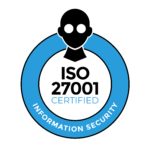The International Traffic in Arms Regulations (ITAR) control how defense-related articles and services are sold, transferred, and accessed—whether physically or digitally. Administered by the U.S. Department of State's Directorate of Defense Trade Controls (DDTC), ITAR exists to safeguard U.S. national security and foreign policy interests. It applies to any U.S. person or organization that manufactures, exports, brokers, or shares data related to defense articles listed on the U.S. Munitions List (USML). That includes everything from physical weaponry to sensitive technical data.
Why it matters: Violating ITAR can mean heavy penalties, disrupted operations, and lost government business. Compliance starts with knowing whether your organization deals with ITAR-controlled items—and acting decisively from there.
What it is
ITAR was created under the authority of the Arms Export Control Act (AECA) and is laid out in 22 CFR parts 120–130. The DDTC oversees adherence, licensing, and enforcement.
ITAR’s primary function is to prevent unauthorized access to sensitive defense technologies. It covers the export and temporary import of “defense articles” (such as weapons, aircraft, electronics), “technical data” (design blueprints, specifications), and “defense services” (training or support) listed on the USML. Notably, ITAR also regulates “deemed exports”—sharing controlled information with foreign persons inside the U.S.
The controls follow the item and not just the location. That means ITAR applies extraterritorially: a U.S. company is responsible for maintaining compliance even when using a foreign subcontractor or storing data overseas.
Core requirements or principles
To remain compliant with ITAR, an organization must follow several core requirements. These include administrative, technical, and operational controls.
1. Registration: Any U.S. party involved in manufacturing, exporting, importing, or brokering defense articles must register with the DDTC by submitting the DS‑2032 form. This registration is mandatory for applying for licenses.
2. Licensing and agreements: Most exports require an appropriate license—DSP‑5 for permanent exports, DSP‑73 for temporary exports, and others for imports or classified items. Sharing services or technical data often requires Technical Assistance Agreements (TAA) or Manufacturing License Agreements (MLA).
3. Commodity jurisdiction (CJ): Determining whether an item or service falls under ITAR can be complex. If unsure, organizations must request a CJ determination to avoid accidental violations.
4. Data security and encryption: Organizations must protect ITAR-controlled technical data using end‑to‑end encryption and avoid intentional storage in or routing through proscribed countries.
5. Recordkeeping: All registrants must retain comprehensive export records, including licenses and shipping documentation, for at least five years after the final transaction.
6. Restricted parties and countries: ITAR prohibits exports to certain countries and entities. Organizations must screen partners and end-users and include destination control statements on shipping documents.
Types or categories
ITAR compliance depends on the type of items and transactions involved. These distinctions affect how organizations approach their controls and authorizations.
USML categories: The USML spans 21 categories, from firearms (Category I) to spacecraft systems (Category XV). Items marked as Significant Military Equipment (SME) or Major Defense Equipment (MDE) require even stricter control.
Licenses and approvals: The type of license used—DSP‑5, DSP‑73, DSP‑61, or DSP‑85 for classified exports—depends on the nature of the transaction. TAAs and MLAs apply to sharing know-how or production rights.
Brokering activities: Entities that facilitate transfer of ITAR items—without handling them directly—must separately register and sometimes seek approval.
Exemptions for close allies: Special exemptions simplify trade with Canada (126.5), the UK (126.17), and Australia under the AUKUS treaty (126.7), but still require diligent eligibility checks.
Compliance process
Achieving ITAR compliance is a structured process that centers on risk identification, proper authorization, and controlled execution.
1. Scoping and readiness: Start by identifying whether your products, technical data, or services fall under the USML. If questions arise, initiate a CJ request. Appoint an Empowered Official to oversee ITAR matters with the authority to represent the organization to the DDTC.
2. Registration: Submit the DS‑2032 registration form through the DDTC’s portal, along with the applicable fee based on your organization’s size and involvement.
3. Licensing and agreements: Prepare and submit the correct license or agreement type with supporting documentation—including technical descriptions, end-user info, and certifications.
4. Exports and filings: Once approved, use AES to electronically file export data with Customs and Border Protection (CBP) and affix the required destination control statements.
5. Recordkeeping and monitoring: Ensure that licenses are used as approved, expiration dates are tracked, and compliance records are stored for five years. Regularly filter transactions against the denied parties list.
Typical license processes take 30–60 days—longer if classified or SME items are involved or notices of retransfer are needed.
Common challenges
ITAR compliance is technically and operationally complex. Even seasoned defense contractors can trip up without consistent oversight.
Misclassification of items: Confusing Commerce-controlled items (under EAR) with ITAR-controlled items is common. Errors here can lead to unauthorized exports or delays in licensing.
Deemed exports and remote access risks: Managed access to technical data is critical. Granting a foreign employee or contractor access—even inside U.S. borders—without a license is a violation.
Cloud storage and collaboration: Storing or transmitting technical data via cloud platforms requires end-to-end encryption and verification that data won’t route through restricted countries.
Supply chain control: Even subcontractors and third-party logistics providers must follow ITAR rules. Managing reexport/retransfer approvals with multiple layers of partners requires rigorous documentation.
Benefits of compliance
ITAR compliance delivers more than regulatory peace of mind—it enhances credibility and accelerates access to strategic opportunities.
Reduce legal and operational risk: Compliance helps prevent civil or criminal penalties, which can exceed $1.27 million per violation. It minimizes the likelihood of audits, investigations, or export license suspensions.
Unlock participation in defense programs: Registration and licensing enable businesses to engage in U.S. military, aerospace, and allied initiatives. Many prime contractors won’t work with unregistered subs.
Streamline global collaboration: Compliant organizations can access faster, government-supported licensing for exports under frameworks like AUKUS and the UK's Open General Export Licence (OGEL) equivalents.
Strengthen customer trust: Demonstrable commitment to export control shows customers and regulators that your organization takes security seriously.
Who needs it and when
If you manufacture USML-listed items—even without exporting—you may be subject to ITAR. Exporters, temporary importers, and brokers also fall within the scope.
Common triggers include:
- Designing or producing components for defense systems.
- Sharing CAD files, source code, or technical specs with foreign nationals.
- Partnering internationally for co-development or supply chain fulfillment.
- Responding to Requests for Proposals (RFPs) from U.S. defense contractors.
Failing to recognize ITAR applicability early in an initiative can result in project delays—or worse, export violations.
Preparation tips
Execution depends on structure, governance, and buy-in from both technical and leadership stakeholders.
Designate an Empowered Official: This person must understand ITAR, have decision-making authority, and be able to certify applications under potential legal scrutiny.
Map your inventory and data: Maintain a control matrix linking your products, parts, and data to USML categories. Use CJ requests when classification is uncertain.
Implement safeguards: Encrypt technical data using FIPS-validated cryptography. Control access permissions to restrict visibility to U.S. persons unless licensed otherwise. Screen all third parties for restricted status.
Standardize documentation and filings: Build templates for license applications, agreements, and export filings. Ensure systems are in place to track expiration dates and file AES export data electronically.
Maintain audit readiness: Keep complete records on all authorizations, shipments, correspondence, and validations for at least five years.
Conclusion
ITAR is more than a compliance requirement—it’s a national security mandate with global business implications. For companies operating in the defense, aerospace, or advanced technology sectors, getting it right is non-negotiable.
The compliance framework requires upfront rigor in classifying items, securing authorizations, and managing long-term records. But when operationalized properly, ITAR compliance equips your organization to enter new markets, build trusted alliances, and support secure international defense cooperation. If you’re working with sensitive technologies or new international partners, now is the time to evaluate your compliance posture.

Related Posts
Stay connected
Subscribe to receive new blog articles and updates from Thoropass in your inbox.
Want to join our team?
Help Thoropass ensure that compliance never gets in the way of innovation.












.png)